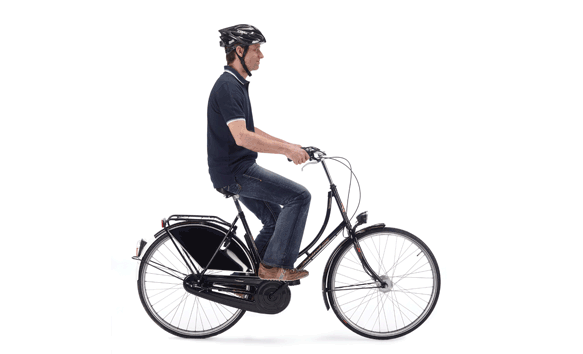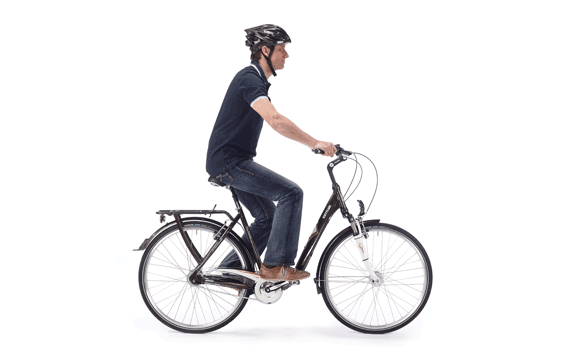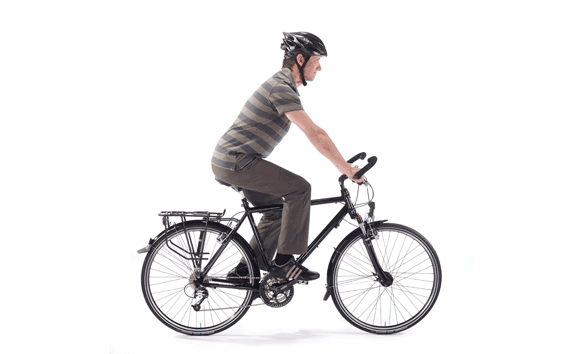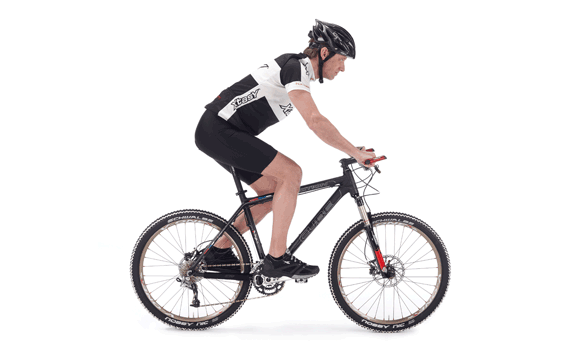The right riding style
Slide 1

First of all you have to know which riding style you prefer.
We show you a range of options using four types of bicycles.

First of all you have to know which riding style you prefer.
We show you a range of options using four types of bicycles.

Do you prefer riding at a moderate speed?
On a classic bike you sit comfortably. Your posture is upright, almost vertical (90° angle to the ground). The handlebars and grips are very close to the torso.
Advantage: Intuitively, the spine is held in its natural "S-shape". Disadvantage: After a short while many people tend to take on a slumped posture.
Advantage: The stress on the arms and hands is very low. Disadvantage: All the weight rests on the buttocks.

Do you prefer to cycle short distances?
The city bike gives the rider a good view of the traffic. You sit with a slightly inclined torso (approx. 60° to 70° angle to the ground). All city bikes have high handlebars.
Advantage: The upright posture gives the rider a good view of the traffic. Disadvantage: The high seat can easily tempt one to slump in the saddle.
Advantage: Power can be firmly applied to the pedal. Disadvantage: The arms are often held straight to grip the high handlebars. This leads to cramped shoulders and pain in the hands.

Do you prefer to go out on longer runs and want to cover ground fast?
The trekking bike is particularly well suited to longer rides. Here the torso is distinctly inclined (30° to 60° angle to the ground). The distance between the handlebars and the saddle is relatively large.
Advantage: The shoulders, back of the neck and hands take a greater share in supporting the load, resulting in a more versatile riding style. Advantage: Relieves pressure on the back, spine and buttocks, which is especially important when riding longer distances.
Disadvantage: The muscles need training to withstand this load comfortably.

Do you like a sporting challenge?
On a sports bike you ride fast-paced with power in mind. You sit with a strongly inclined torso (15° to 30° angle to the ground). The saddle is higher than the handlebars.
Advantage: Optimal power transmission.
Disadvantage: Not suitable for cycling in everyday traffic. The body is continuously tensed to performance level.
Advantage: Aerodynamic, low air resistance.
Disadvantage: Demands highly trained areas of muscle (back, legs, shoulders, stomach).
